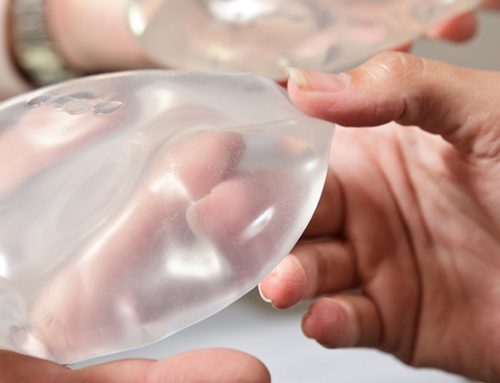“Women across generations agree that age does not define beauty,” AARP Survey of Women’s Reflections on Beauty, Age, and Media.
Thanks to the passage of time, hormonal changes—and gravity—most women begin to see a change in their breasts around age 40. It is normal at this point for breasts to appear smaller, less firm, more droopy, and further apart. Exactly when and how quickly changes like these occur depends a lot on genetics, body type, breast density and things like diet, exercise, and being a smoker.
For these reasons, no two women (and no two breasts) will age in the same way. That said, nature tends to follow certain patterns when it comes to aging tissues in and around the breast. Understanding how age affects bone, muscle, and other breast tissue can help explain the changes that each woman sees in the mirror, and what, if anything she might want to do about it.
Bones
No, breasts are not made up of bone, however, aging of the bones in the rib cage can have a visual impact on the breasts. With age, bone tends to shrink and lose density, providing less support and forward projection of the overlying breasts. This together with changes in posture can decrease the appearance of breast fullness.
Muscles
Between the rib cage and breast tissue lies a layer of muscle that can greatly affect the appearance of the breasts. The tone and thickness of this muscle tends to diminish with age, resulting in flatter and lower placed breast. Some of this can be mitigated by exercise to keep these muscles toned.
Fat/Glandular Tissue
Breasts are mostly made up of a combination of fat and glandular tissue, including the milk ducts. With age and hormonal changes, breast tissue becomes less glandular and the ratio of fat becomes higher. Though the ratio of may be higher, the total amount of fat overall may still be reduced. The remaining fat is also usually less well distributed or smooth. This can result in less volume, especially in the upper part of the breast, and more sagging.
Some women, of course, gain weight with age (particularly after menopause) and for them fatty tissue increases, and their breasts do get bigger. “I have seen many women over the years who in their early 20’s underwent breast augmentation. Now in their late 50’s or early 60’s their breasts have increased in size due to this, and they feel too big and heavy,” says Dr. Slack. “Often they will choose to have their implants removed, which can be done without a significant increase in droopiness. This gets them back down to a size that they are happier with.”
Skin
The skin that covers the breast acts like a container for the rest of the breast tissue. Connective tissues like collagen, elastin and glycosaminoglycans (GAGs) keep the skin tight, elastic, and hydrated. With age, the body produces fewer GAGs, giving skin a dryer, less plump, and saggier appearance.
Nipple
Technically speaking, what we call the nipple is the nipple-areolar complex (NAC). The center most raised part of the NAC is the actual nipple and it is where the milk ducts exit the breast. The circle of pigmented skin surrounding the nipple is the areola and it contains small bumps called Montgomery glands. With age, the areola can shrink and in some cases disappear. The nipple can sometimes become more inverted.
Among women there is huge variability in the way all these components come together to form a pair of breasts. There is even more variability on how these breasts then change with age. This means that for those women (and men) considering plastic surgery, a nuanced and highly individualized approach is necessary. It’s important to have a surgeon who can help you achieve the best results possible, even though not all the components can (or should) be changed surgically.
Dr. Slack, who has specialized training in plastic surgery of the breast, operates with one simple guiding principle – the patient comes first. With him, each patient gets the time, attention, and information they need to make the decision that is best for them. Make an appointment for a consultation today.




